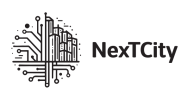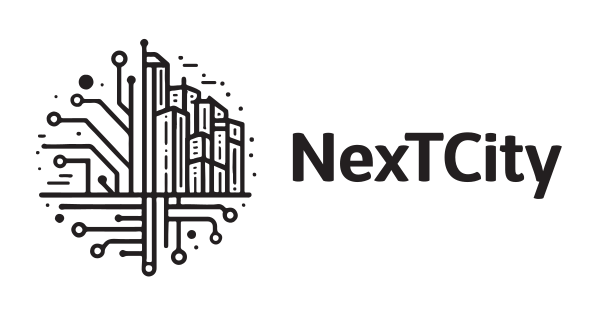On October 16, 2025, NOVA IMS hosted the event Digital Twins for Urban Futures: Insights and Applications, a morning dedicated to demonstrating and discussing how urban digital twins—virtual, data-rich representations of real urban environments—are transforming the way we understand, manage, and plan cities.
The session brought together experts from NOVA IMS, KU Leuven, Universitat Jaume I (UJI), Esri Portugal, and PGDL, offering a blend of theoretical depth, applied technology, and forward-looking visions for smart and sustainable territories.
From Concept to Application: Advancing Digital Twins
Opening the event, André Barriguinha (NOVA IMS) introduced the evolving concept of digital twins, framing them as living systems that continuously mirror the physical world through data exchange. Drawing from recent academic work, Barriguinha highlighted how digital twins move beyond static models: “By leveraging data collected in smart cities and automatically feeding it into the city model, we maintain an accurate digital replica capable of interacting autonomously with the city.”
He demonstrated this approach through already developed NOVA Cidade projects such as C-Tech and the Urban Co-Creation Data Lab, where tools were developed for urban mobility simulation, walkability assessment, pollution modeling, and energy optimization. The presentation culminated with the presentation of the NexTCity Project, a European Union-funded project developed by NOVA IMS, UJI, and KU Leuven. Its mission: to build a digital twin of Lisbon’s Zero Emission Zone (ZER), integrating 3D visualization, predictive modeling, and decision-ready data for emission reduction and improved urban quality of life.
Within this framework, Nicolás Luna (UJI) presented a preliminary small-scale digital twin of Lisbon’s Baixa Pombalina, which will later be expanded and connected to live data streams on occupation, air quality, mobility, and traffic—laying the groundwork for an integrated city model capable of supporting urban decision-making.
Humanizing Data: The Social Dimensions of Digital Twins
Representing KU Leuven, Ate Poorthuis and Naomi Thiru explored how digital twins can serve not just as technical infrastructures but as socio-technical systems, bridging data-driven governance and human experience. Their presentation, “Digital Twins for Decision-Making,” drew lessons from the USAGE Project, which applies data spaces to support sustainable urban policies across European cities including Leuven, Zaragoza, Ferrara, and Graz.
Poorthuis underscored the importance of transparency, interoperability, and inclusivity, emphasizing that urban data must be findable, accessible, and reusable. The KU Leuven team also reflected on the human dimension of digital twins, asking: “Where are the people in digital twins?”—a question that resonated deeply throughout the event. As Thiru illustrated through their collaboration with Singapore’s Housing Development Board, integrating subjective measures such as happiness, perception, and inequality with traditional indicators can reshape our understanding of urban well-being.
This idea found an echo later in the debate, when a student asked whether data scientists should rely more on subjective human perception, such as survey responses, or on objective data from sensors, cameras and other devices; Barriguinha expanded on how both sources are essential and must be compared and understood together to produce meaningful insights for decision-makers.
Technology in Practice: From Airports to Flood Management
Bringing the discussion closer to practical implementation, Nuno Leite (Esri Portugal) showcased how ArcGIS technology underpins the development of dynamic digital twins worldwide. He shared two showcases:
- The Zurich Digital Twin, an example of how advanced geospatial integration supports climate and infrastructure planning.
- The San Francisco International Airport Dynamic Twin, a real-time operational model combining GIS and IoT data streams to enhance monitoring, optimize mobility flows, and improve maintenance coordination.
These examples demonstrated how digital twins can bridge data layers, from underground utilities to live sensor networks, into cohesive systems that empower urban management and sustainability.
Following this, Tiago Gomes from PGDL (Plano Geral de Drenagem de Lisboa) presented Lisbon’s Plan for Flood Risk Management. He recalled the city’s long-standing flooding issues since the 1980s and explained how two major drainage tunnels—Monsanto–Santa Apolónia (5 km) and Chelas–Beato (1 km)—are being modeled using BIM and digital twin tools to optimize design and operation. Once completed, these infrastructures are expected to reduce flooding by up to 80%, marking a significant leap for Lisbon’s resilience and public safety.
Looking Forward: Digital Twins for Smarter, Human-Centered Territories
In his closing remarks, Professor Miguel de Castro Neto, Director of NOVA IMS and NOVA Cidade Urban Analytics Lab, connected the event’s discussions to Portugal’s Estratégia Nacional de Territórios Inteligentes (ENTI). He emphasized how digital twins are central to ENTI’s vision, providing data-driven frameworks that enhance public management, transparency, and citizen well-being.
“Digital twins are not just about technology, they are about improving lives through better decisions,” Neto concluded, reinforcing NOVA Cidade’s role in producing open, reusable, and innovative digital tools that serve both municipalities and the public good.
A Dialogue Between Data and Humanity
Though technical in scope, Digital Twins for Urban Futures reminded participants that data, models, and algorithms ultimately serve people. Whether through visualizing emissions, predicting floods, or mapping happiness, the event underscored a common thread: the future of digital twins depends on integrating the human perspective into the data narrative.

